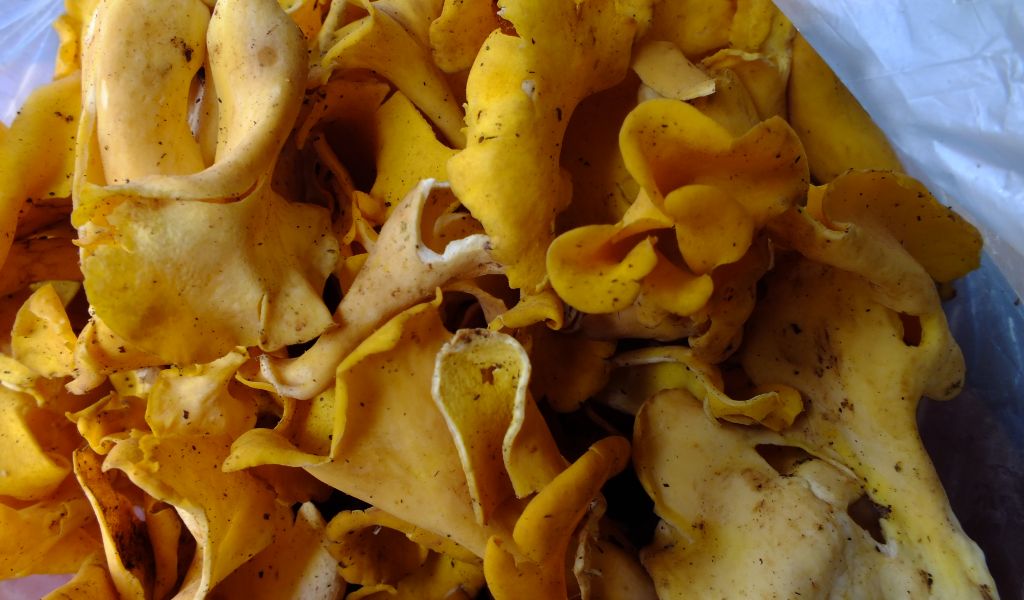ເຫັດແສດໃຫຍ່ / Chanterelle
APA 6th ed. ເຫັດແສດໃຫຍ່ / Chanterelle. (2019, April 3). Retrieved from https://www.phakhaolao.la/kb/0000073
MLA 8th ed. ເຫັດແສດໃຫຍ່ / Chanterelle. Pha Khao Lao, 3 April 2019, https://www.phakhaolao.la/kb/0000073.
Chicago 17th ed. Pha Khao Lao. 2019. "ເຫັດແສດໃຫຍ່ / Chanterelle." Published April 3, 2019. https://www.phakhaolao.la/kb/0000073.

Agaricus chantarellus L.
Agaricus chantarellus Bolton
Alectorolophoides cibarius (Fr.) Earle
Cantharellus alborufescens (Malençon) Papetti & S. Alberti
Cantharellus carneoalbus R. Heim
Cantharellus neglectus (M. Souché) Eyssart. & Buyck
Cantharellus pallens Pilát
Cantharellus rufipes Gillet
Cantharellus vulgaris Gray
Chanterel alectorolophoides (Schaeff.) Murrill
Chanterel chantarellus (L.) Murrill
Craterellus cibarius (Fr.) Quél.
Merulius alectorolophoides (Schaeff.) J.F. Gmel.
Merulius chantarellus (L.) Scop.
Merulius cibarius (Fr.) Westend.
Chanterelle (Eng)
Fruiting bodies 5−9 cm high when mature. cap 3−7 cm broad at maturity, "capucine yellow", quickly becoming whitish−hoary over the disc, and then appearing somewhat floccose, especially in distinct sectors of concentric circles, planar to deeply depressed but not infundibuliform at maturity; margin inrolled when young, becoming everted in age, so that the mature fruiting bodies rarely show an inrolled margin. Gill folds 2.8−3.2 mm high, crowded, usually wavy, often forked but rarely anastomosing, deeply decurrent, obtuse, "orange buff" to "capucine orange" in daylight, but "orange buff" to "light orange yellow" in fluorescent light. Stipe 3.5−5.5 x 0.5−l.5 cm, often slightly bulbous at the base, usually bent, basal mycelium white, becoming "pale orange yellow", "apricot yellow" or "light orange yellow" toward the top of the stipe, unstaining or staining very slightly darker on handling or cutting. Flesh near white throughout, sometimes staining slightly toward the pale ochre shades when bruised.
Food: soup with vegetable or bamboo, menu in Xiangkhouang, some menu in Vientiane make soup with fish or poke Chanterelles are relatively high in vitamin C (0.4 mg/g fresh weight), very high in potassium (about 0.5%, fresh weight), and are among the richest sources of vitamin D known, with ergocalciferol (vitamin D2) as high as 212 IU/100 grams fresh weight. Scientific research has suggested that the golden chanterelle may have potent insecticidal properties that are harmless to humans and yet protect the mushroom body against insects and other potentially harmful organisms
